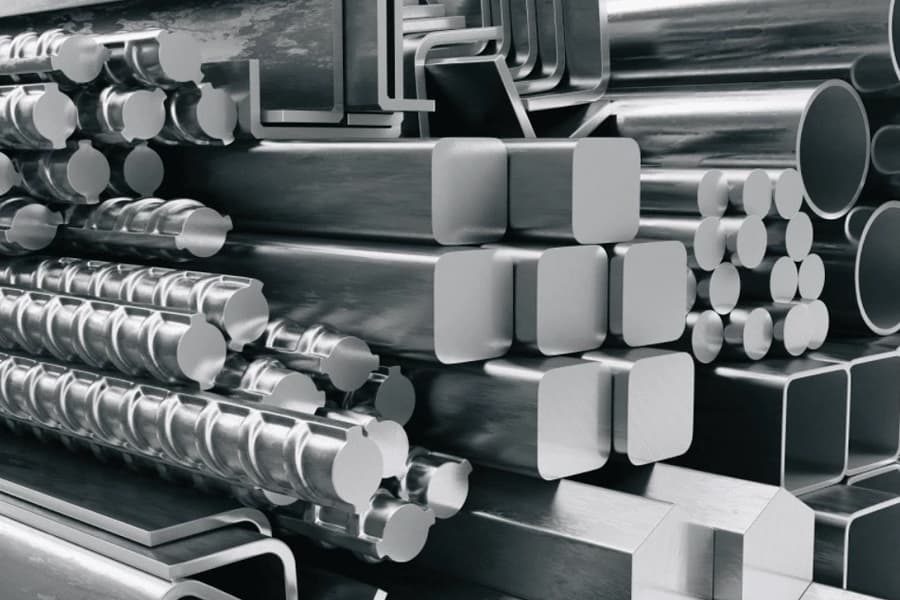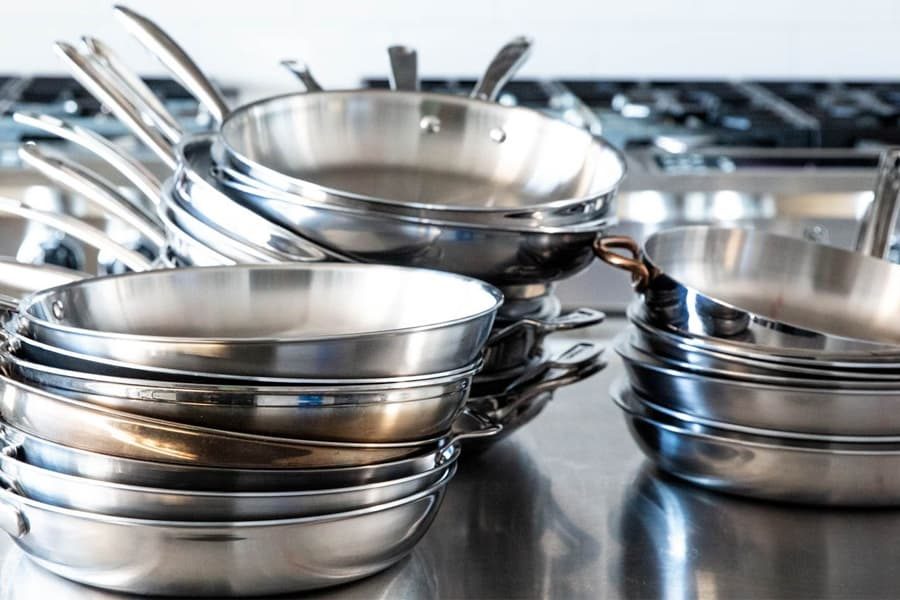Stainless Steel Properties
Stainless steel is the name of a family of iron-based alloys known for their corrosion and heat resistance. One of the main characteristics of stainless steel is its minimum chromium content of 10.5%, which gives it its superior resistance to corrosion in comparison to other types of steel. Like other steels, stainless steel is composed primarily of iron and carbon, but with the addition of several other alloying elements, the most prominent being chromium. Other common alloys found in stainless steel are nickel, magnesium, molybdenum, and nitrogen.
What are the properties of stainless steel?
Stainless steel has many desirable properties that contribute greatly to its widespread application in the making of parts and components across many industrial sectors. Above all, because of its chromium content, it is extremely resistant to corrosion. The 10.5% minimum content makes steel approximately 200 times more resistant to corrosion than steels without chromium. Other favorable properties for consumers are its high strength and durability, its high and low-temperature resistance, increased formability and easy fabrication, low maintenance, long-lasting, attractive appearance and it is environmentally friendly and recyclable. Once stainless steel is put into service, it does not need to be treated, coated, or painted.
- Corrosion resistant
- High tensile strength
- Very durable
- Temperature resistant
- Easy formability and fabrication
- Low-maintenance (long-lasting)
- Attractive appearance
- Environmentally friendly (recyclable)

Grading systems for stainless steel
There are many numerical grading systems for stainless steel, designated according to their composition, physical properties, and applications. Each type of stainless steel is classified by its serial number and then assigned a numerical grade. The most popular series numbers are 200, 300, 400, 600, and 2000. The most common grades are type 304 and 316 which consist of austenitic chromium-nickel alloys. Cutlery-grade stainless steels are found in the 400 Series, which is derived from ferritic and martensitic chromium alloys. Type 420 is known as surgical steel, and type 440 is known as the razor blade steel.
Stainless Steel Classifications
The family of stainless steels is primarily classified into four main categories based upon their crystal microstructure.
Ferritic
Ferritic steels are the 400 Grade stainless steels noted for their high chromium content, which can range from 10.5% to 27%. They have magnetic properties, too, and offer good ductility, tensile-property stability, and resistance to corrosion, thermal fatigue, and stress-corrosion cracking.
Typical applications for ferritic stainless steel include automotive components and parts, the petrochemical industry, heat exchangers, furnaces, and in durable goods like appliances and food equipment.
Austenitic
Perhaps the most common category of stainless steel, austenitic grade steels are high in chromium, with varying amounts of nickel, manganese, nitrogen, and some carbon. Austenitic steels are divided into the 300 series and 200 series subcategories, which are determined by which alloys are used. The austenitic structure of the 300 series is distinguished via the addition of nickel. The 200 series primarily uses the addition of manganese and nitrogen. Grade 304 is the most common stainless steel.
Sometimes referred to as 18/8 because of its 18% chromium and 8% nickel, it is used in kitchen equipment, cutlery, food processing equipment, and structural components in the automotive and aerospace industries. Grade 316 is another common stainless steel. It is used in the making of a wide range of products such as food preparation equipment, laboratory benches, medical and surgical equipment, boat fittings, pharmaceutical, textile, and chemical processing equipment.

Martensitic
Martensitic stainless steels are in the 400 Grade series of stainless steels. They have a low to high carbon content and contain 12% to 15% chromium and up to 1% molybdenum. It’s used whenever corrosion resistance and-or oxidation resistance is required along with either high strength at low temperatures or creep resistance at elevated temperatures. Martensitic steels are also magnetic and possess relatively high ductility and toughness, which make them easier to form.
Applications for martensitic stainless steels include a wide range of parts and components, from compressor blades and turbine parts, kitchen utensils, bolts, nuts and screws, pump and valve parts, dental and surgical instruments, to electric motors, pumps, valves, machine parts sharp surgical instruments, cutlery, knife blades, and other cutting hand tools.
Duplex
As the name implies, duplex stainless steels possess a mixed microstructure of ferrite and austenite. The chromium and molybdenum content is high, with 22% to 25%, and up to 5%, respectively, with very low nickel content. The duplex structure gives stainless steel many desirable properties. For starters, it offers double the strength of ordinary austenitic or ferritic stainless steels, with excellent corrosion resistance and toughness.
Designated in the 2000 Grade series, duplex stainless steel is ideal for applications in demanding environments such as in chemical, oil, and gas processing and equipment, marine, high chloride environments, pulp, and paper industry, cargo tanks for ships and trucks, and bio-fuels plants, chloride containment or pressure vessels, transportation, heat exchanger tubes, construction, the food industry, desalination plants, and components for FGD systems.
Get Solutions
Popular for its exceptional strength, corrosion resistance, and machinability, stainless steel has become a staple in the metals industry. Also to a complete inventory of virtually all shapes, sizes, and grades, China Tisco also offers custom stainless steel supply chain solutions and is able to deliver products to each customer’s exact specifications. Contact us to get a custom stainless steel supply chain solution!
